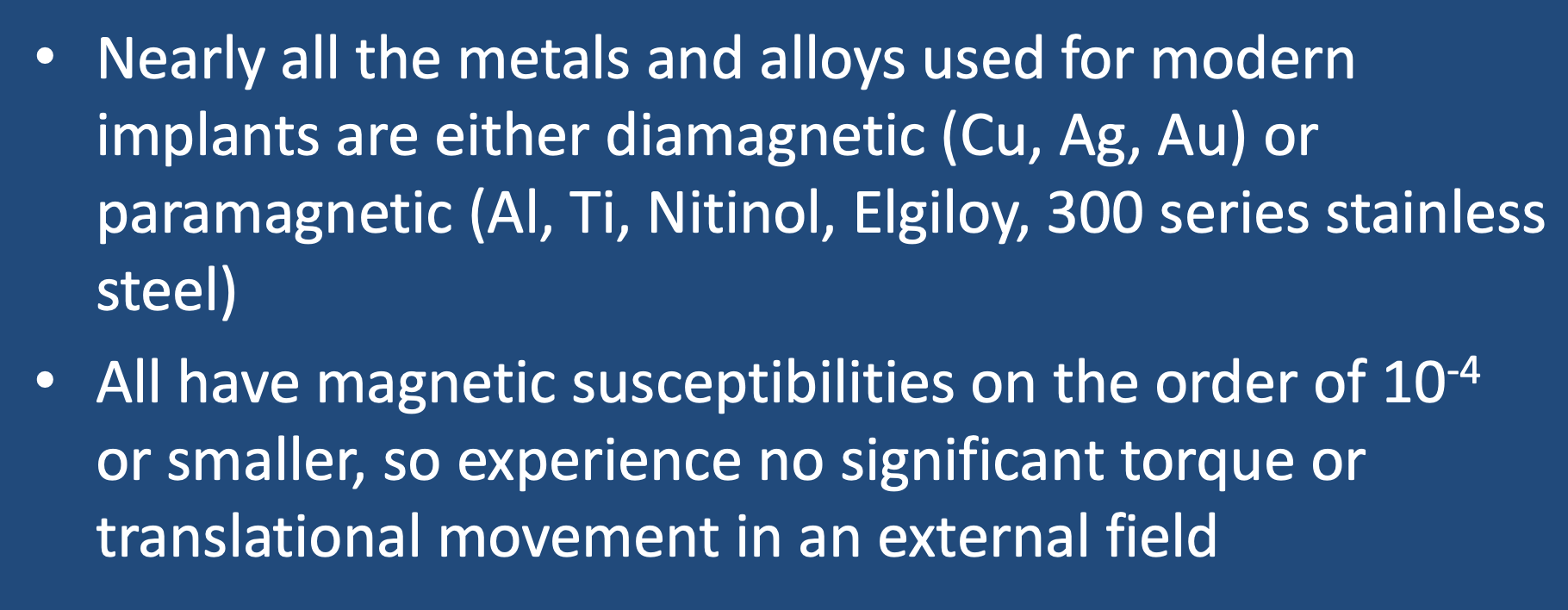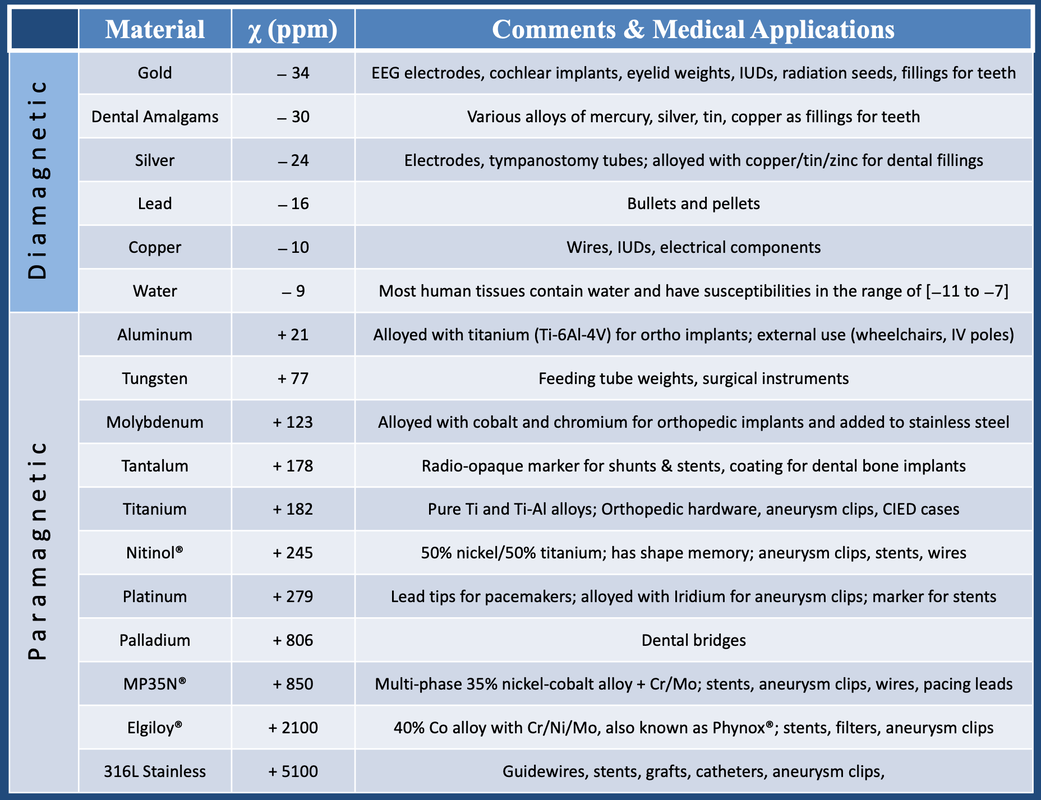For the purposes of this question, I have limited "safe" to refer the fact that the metal is not moved or significantly attracted to the main magnetic field (Bo). Interaction effects of metals with gradient and RF magnetic fields due to electrical conductivity are discussed elsewhere.
As discussed in the prior Q&A, objects made of ferromagnetic materials — iron, cobalt, manganese, nickel and a few rare earth elements and their alloys — have the potential to move or twist in a static magnetic field creating potential danger. Fortunately, most other metals and alloys used in the medical environment are either diamagnetic or so weakly paramagnetic that they are viewed as posing no danger when placed near an MRI scanner.
Below is a listing of commonly used metals and alloys used for medical implants that have only weak magnetic properties and are thus considered relatively "safe" in the MR environment.
Below is a listing of commonly used metals and alloys used for medical implants that have only weak magnetic properties and are thus considered relatively "safe" in the MR environment.
Diamagnetic materials, as well as some of the weakly paramagnetic ones, have such small susceptibilities that they often appear simply as focal area of signal void on MR images with relatively little artifact. As one progresses down the table toward stainless steel, the susceptibilities become larger and are associated with more artifact, especially on gradient-echo imaging. Still, because their susceptibilities are << 1.0, they pose no particular danger in the MR environment. By comparison, ferromagnetic materials have susceptibilities in the hundreds of thousands, creating large artifacts and posing risk of movement.
Advanced Discussion (show/hide)»
No supplementary material yet. Check back soon!
References
Hermawan H, Ramdan D, Djuansjah JRP. Metals for biomedical applications. In: Fazel R (ed). Biomedical Engineering - From Theory to Applications, Intechopen.com, 2011: 411-430. [DOI Link]
International Stainless Steel Forum. The Stainless Steel Family. Brussels, Belgium. Downloaded from www.worldstainless.org on 1/1/20.
"Magnetic Susceptibility." Wikipedia, The Free Encyclopedia.
MatWeb. Material Property Data. www.matweb.com (physical data on over 150,000 materials)
Prasad K, Bazaka O, Chua M, et al. Metallic biomaterials: current challenges and opportunities. Materials 2017; 10:884. [DOI LINK]
Schenck JF. The role of magnetic susceptibility in magnetic resonance imaging: MRI magnetic compatibility of the first and second kinds. Med Phys 1996;23:815-850. (Slightly dated, but an excellent and enduring explanation of susceptibility from a pioneer in MRI and first inductee in GE's Genius Hall of Fame). [DOI Link]
Hermawan H, Ramdan D, Djuansjah JRP. Metals for biomedical applications. In: Fazel R (ed). Biomedical Engineering - From Theory to Applications, Intechopen.com, 2011: 411-430. [DOI Link]
International Stainless Steel Forum. The Stainless Steel Family. Brussels, Belgium. Downloaded from www.worldstainless.org on 1/1/20.
"Magnetic Susceptibility." Wikipedia, The Free Encyclopedia.
MatWeb. Material Property Data. www.matweb.com (physical data on over 150,000 materials)
Prasad K, Bazaka O, Chua M, et al. Metallic biomaterials: current challenges and opportunities. Materials 2017; 10:884. [DOI LINK]
Schenck JF. The role of magnetic susceptibility in magnetic resonance imaging: MRI magnetic compatibility of the first and second kinds. Med Phys 1996;23:815-850. (Slightly dated, but an excellent and enduring explanation of susceptibility from a pioneer in MRI and first inductee in GE's Genius Hall of Fame). [DOI Link]
Related Questions
Which types of metal are the most dangerous around a magnetic field?
Which types of metal are the most dangerous around a magnetic field?

